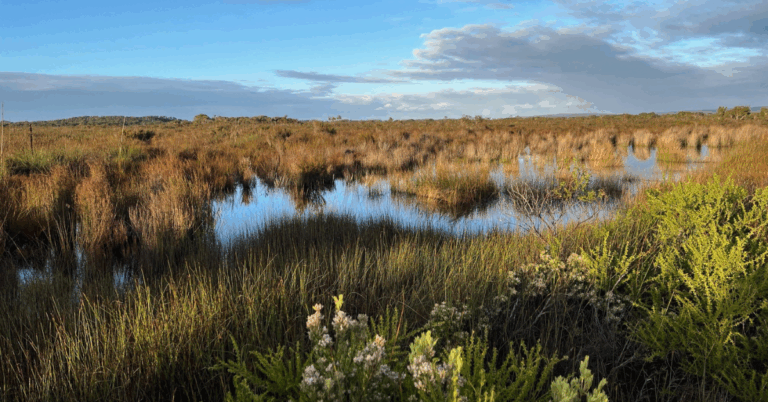
Article by Dr Manda Page
In Short:
- The National Climate Risk Assessment provides a sobering outlook for the South West region.
- Climate change is already affecting our communities, our natural resources and our threatened species.
- Solving the challenges requires a collective effort and South West NRM stands ready to turn knowledge into solutions.
On 15 September, the Australian Government released its first National Climate Risk Assessment (NCRA) alongside the National Adaptation Plan. 
Together, these documents provide a clear-eyed picture of the climate challenges ahead and outline the framework for strengthening resilience across the nation.
At South West NRM, we welcome this work. It is sobering to see the risks presented using the best science available. One of the starkest findings is that by 2050, up to 70% of native plant species could face conditions outside their current climate range, placing them at risk of collapse.
What this means for the South West of WA
Here in the South West, climate change is not a distant concern—it is already shaping our landscapes, communities, and economy. The reports reiterate the risks we know well:
- Declining rainfall and stream flows, threatening water security for people, agriculture, and ecosystems.
- Agricultural vulnerability to shifting temperatures, reduced rainfall, and more frequent droughts.
- Increased bushfire risk, putting communities, infrastructure, and biodiversity in harm’s way.
- Coastal exposure to sea level rise and storm surges.
As one of the world’s Biodiversity Hotspots, the South West is especially vulnerable. Our threatened species and ecosystems are under growing pressure, with many edging closer to the extinction cliff-face.
What’s most at risk?
The NCRA is a reminder that climate change is not an abstract, far-off issue. It’s here, now, and it’s reshaping the way we live and work. For us, the greatest concerns are the risks faced by:
- Our communities, already feeling the strain of hotter, drier conditions.
- Our natural resources, which underpin food, water, and economic security.
- Our threatened species, from the Carnaby’s black-cockatoo to the white-bellied frog, that make our region unique.
Where we go from here
The National Adaptation Plan sets out a strong framework, but frameworks alone are not enough.
We need clear, coordinated, and funded strategies to translate national findings into local action.
No single organisation or sector can solve this challenge alone. It will take a collective effort across government, industry, community groups, and individuals. South West NRM stands ready to:
- Support the development of tailored adaptation plans for our region.
- Scale up our work restoring landscapes and protecting biodiversity.
- Partner with farmers, communities, and industries to adapt to a changing climate.
The release of these national reports marks an important step forward. Now our job is to bring those insights home—turning knowledge into solutions that build a resilient, climate-ready South West.
Projects ready to go
At South West NRM we have identified a series of projects we believe address our region’s biggest environmental priorities.
We are actively seeking partnerships and investment to turn these project concepts to reality.
If you, or the company you work for have an interest in contributing to the protection and recovery of one of the most biologically important, yet most threatened places on earth, I invite you to consider our Investment Prospectus accessed via the link below.
